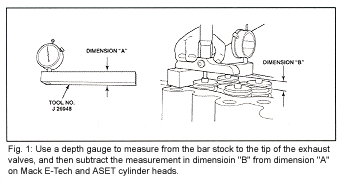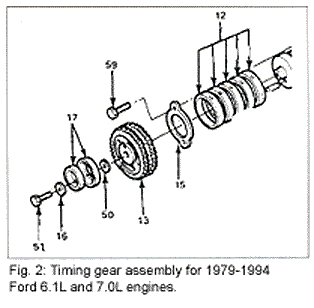Engine Builders: The AERA Technical Committee offers the following information regarding a cylinder boring caution for 1996-2002 GM 5.7L VIN R engines. These engines are the last version of the original small block series and have been commonly called “Vortec” engines.
It has been reported that cylinder bore distortion is prevalent in these blocks. Therefore, it is extremely necessary to use a stress plate while boring/honing for oversize pistons. The pistons used for this engine are a short skirt design, and piston noise is likely if excessive clearance exists. In some instances on engines that were bored/honed without a stress plate the noise was only noticeable during initial start-up. In other cases, however, the noise reduced as the engine warmed, but it never completely disappeared.
As much as .003″ out of round has been reported when measuring bore size with and without stress plates installed. Each block may vary on the exact amount of distortion as cylinder wall thickness is not identical on all blocks. To measure distortion on a particular block it is suggested to bolt on and torque both cylinder heads. Then, take measurements from the bottom side of the block and compare to the first measurements made before the heads were installed. Make sure to also torque the main bolts as well before measuring.
Engine Builders: The AERA Technical Committee offers the following information measuring exhaust tip height on MackE-Tech™ and ASET™ cylinder heads. On either cylinder head, whether using either J-Tech™ or PowerLeash™ engine brakes, the maximum height of the exhaust valve tip above the cylinder head cover mounting surface must not be exceeded for correct operation and long service life.
Before installing cylinder heads and assembling the rocker shaft assemblies on an engine brake-equipped E-Tech or ASET engine, exhaust valve stem tip height must be measured.
On E-Tech and ASET cylinder heads with either J-Tech or PowerLeash engine brakes, the maximum height of the exhaust valve stem tip above the cylinder head cover mounting surface must not exceed .646″ (16.408 mm). This maximum allowable dimension is important for J-Tech-equipped engines to ensure that the specified .021″ (.533 mm) brake lash can be obtained. For PowerLeash-equipped engines, this dimension is important to ensure that the proper relationship between the brake actuator plunger and the valve stem cap is maintained.

This measurement can be made by placing a piece of flat bar stock having a known thickness across the cylinder head cover mounting surface. Use a depth gauge to measure from the bar stock to the tip of the exhaust valves, and then subtract the measurement obtained with the depth gauge (dimension B in the illustration, Figure 1) from the thickness of the bar stock (dimension A). The difference between the two is the exhaust valve stem tip height.
The bar stock used with the cylinder block depth gauge (tool p/n J 26948) can be used to perform the above measurement. However, any piece of bar stock can be used as long as the specifications are within limits.
If one or more of the exhaust valve stem tips exceed the maximum height of .646″ (16.408 mm), DO NOT replace the cylinder head. Instead, install .025″ shims (p/n 505GC212) under each rocker arm shaft mounting bracket on the affected cylinder head. This will raise the engine brake by .025″ (.635 mm), thus re-establishing the proper relationship between the top of the valve and the engine brake.
With PowerLeash-equipped engines, there will not be a noticeable inability to obtain the correct engine brake lash adjustment of .045″ (1.143 mm) if the exhaust valve stem tip height is greater than .646″ (16.408 mm).
It is important that exhaust valve stem tip height be measured and shims installed as required to ensure proper relationship between the engine brake actuator plunger and the exhaust valve stem cap and proper functioning of the PowerLeash engine brake.
In service, all cylinder heads will encounter a certain degree of valve recession. If the .646″ (16.408 mm) dimension is exceeded due to either a stack-up of tolerances in a replacement cylinder head or valve seat recession, the .025″ shims (p/n 505GC212) must be installed under all three rocker arm mounting brackets of a cylinder head that has one or more exhaust valves higher than .646″ (16.408 mm). The torque specification for the rocker shaft mounting bracket bolts remains the same at 40 ft.lbs. (55 Nm).

Engine Builders: The AERA Technical Committee offers the following information regarding a timing gear assembly caution for 1979-1994 Ford 6.1 and 7.0L engines. This information concerns the correct assembly of the camshaft sprocket and fuel pump eccentric assembly.
Correct spacing of the eccentric will not occur if a spacing washer is omitted during assembly. See item number 50 in Figure 2, for location reference to the p/n 356422S8, which is listed as a camshaft eccentric washer. Correct assembly has different washers on both sides of the eccentric. If the inboard washer is not installed the eccentric will not rotate properly.
Item Number / Component (see Figure 2):
12) Camshaft Bearing Kit
13) Camshaft Sprocket
15) Camshaft Thrust Plate
16) Camshaft Sprocket Washer
17) Fuel Pump Eccentric
50) Camshaft Eccentric Washer
51) Camshaft Eccentric Bolt
59) Camshaft Thrust Plate Bolt
NOTE: It is possible for improper assembly to occur if different personnel are used to disassemble and assemble these engines.
For information on receiving all of AERA’s regular monthly technical bulletins and other association services and benefits, call toll free 888-326-2372 or send an email to [email protected]. AERA’s Web site is www.aera.org.













